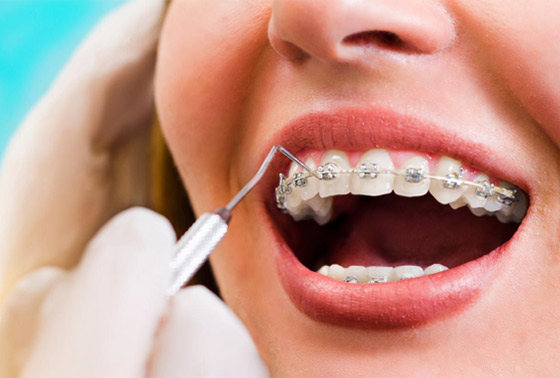- Phone: 08821 - 226692
- +91 - 9885057683
- Mon-Sat (10.30 AM - 8 PM)
- Book an Appointment
Orthodontics

Orthodontics is a branch of dentistry that treats malocclusion, a condition in which the teeth are not correctly positioned when the mouth is closed. This results in an improper bite.
An orthodontist specializes in making the teeth straight.
Treatment can be cosmetic, to improve a person’s appearance, but it often aims to improve oral function, too.
Types of treatment
Treatment can improve the appearance of the teeth, but it can also lead to better chewing and speech function and help protect teeth from damage or decay, in some cases.
To achieve these goals, the orthodontist uses a range of medical dental devices, including headgear, plates, and braces.
Examples of removable appliances include:
Aligners: This alternative to braces may be useful for adults. They are virtually unnoticeable by other people, and they can be removed to brush the teeth, floss, or eat. An aligner is used for 2 to 3 weeks, then changed for a tigher one.
Headgear: A strap around the back of the head is attached to a metal wire in the front, or face bow. The aim is to slow down upper jaw growth, and keeping the back teeth in position while the front ones are pulled back.
Lip and cheek bumpers: These are specially made to relieve the pressure of cheeks or lips on the teeth.
Palatal expander: This appliance is designed to make the arch of the upper jaw wider. It consists of a plastic plate with screws that is placed on the palate, or roof of the mouth. The screws put pressure on the joints in the bones, forcing them outward. This expands the size of the area in the roof of mouth.
Retainers: These are used after treatment to stop the teeth from moving back to their original positions. If modified, they may also be used to stop children from sucking their thumbs.
There are two types of removable retainer:
Permanent retainers are glued, or bonded, to the back of the teeth. It is usually recommended for lower anterior teeth because of the high risk of reverting back to their former position.
In some cases, orthodontists recommend both a fixed permanent one on the lower anterior teeth and the clear plastic aligner-type which then would fit over the entire lower arch.
Splints, or jaw repositioning appliances
These are placed either in the top or lower jaw. They help the jaw close properlyTrusted Source. Splints are commonly used for temporomandibular joint disorder (TMJ). TMJ is a condition that can cause pain and dysfunction in the muscles that are involve in jaw movement.
Whatever your device or treatment, it is important to follow both the health professional’s instructions and oral hygiene guidelines with care, to ensure the best outcome.
Who should see an orthodontist?
If the jaws and teeth do not develop properly, malocclusion can result. The teeth will be crooked and misaligned, and the bottom and top sets of teeth may not line up.
Malocclusion is not a disease and it does not affect physical health. It is a variation in the position of teeth. However, it may impact the shape of the face and the appearance of the teeth, resulting in embarrassment, a lack of self-confidence, and even depression.
Reasons include injury to the teeth or facial bones and frequent thumb or finger sucking, among others.
Subscribe to our
Newsletter
***We Promise, no spam!




